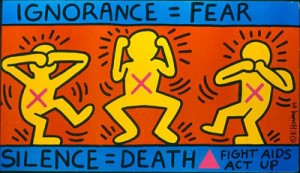
Disinformation in Public Diplomacy
Today, the term propaganda carries with it a negative connotation. However, it was originally a totally impartial and neutral term. Traditionally, propaganda is the information used to directly influence a target audience and comes in three different forms; black, grey and white. Black propaganda is completely covert—it is specifically designed to conceal the true author of the material, often purporting it to be from the opposing side. Grey propaganda, however, has no clearly identified origin, while white propaganda has an openly identified real source.
One element of black propaganda is the dissemination of falsely attributed material, such as letters, speeches, art, currency, literary works, and music. These forgeries are sometimes effective because of their ability to manipulate the perspective of the target audience. Forgery campaigns are also sometimes seen as valuable because their influence often carries on even after the forgery itself has already been refuted.
Operation INFEKTION, a primary example of grey propaganda, was a disinformation campaign run by the Soviet Union through the 1980’s that claimed the United States created HIV/AIDS at Fort Detrick, Maryland as part of a biological weapons development experiment. In 1983 the Indian daily newspaper Patriot first published a letter from an anonymous “well-known American scientist and anthropologist” who claimed that the Centers for Disease Control had been involved in gathering highly deadly viruses from Asia and Latin America for use in biological weapons. Even though this claim was entirely unfounded and was quickly refuted, the operation still had a profound effect on the reputation of the United States abroad.
 For instance, after its initial release, Operation INFEKTION took on a life of its own, particularly in Africa where the story was altered slightly and re-deployed. In 1988, a Nigerian newspaper published a story claiming that AIDS was the result of American testing of a contaminated Polio vaccine during the 1960’s. Operation INFEKTION, like many forgery campaigns, continues to have an effect on the U.S.’s reputation to this day. To put it in perspective, a 2005 study conducted in the United States by the RAND Corporation and Oregon State University discovered that over a quarter of African Americans thought AIDS was created in a U.S. government laboratory.
For instance, after its initial release, Operation INFEKTION took on a life of its own, particularly in Africa where the story was altered slightly and re-deployed. In 1988, a Nigerian newspaper published a story claiming that AIDS was the result of American testing of a contaminated Polio vaccine during the 1960’s. Operation INFEKTION, like many forgery campaigns, continues to have an effect on the U.S.’s reputation to this day. To put it in perspective, a 2005 study conducted in the United States by the RAND Corporation and Oregon State University discovered that over a quarter of African Americans thought AIDS was created in a U.S. government laboratory.
In order for a propaganda campaign to enjoy success, the target audience must be willing to believe the information presented to them. During the Cold War, there was a general culture of distrust surrounding secret government facilities and programs. Operation INFEKTION purposefully played on U.S. government’s lack of credibility in this area. The accusation that the U.S. military manufactured AIDS seemed plausible to the audience and they were therefore willing to believe it.
While forgery campaigns may sometimes be a successful method of subversion, this does not mean that the U.S. should employ such practices as part of its public diplomacy arsenal. As ASP’s Matthew Wallin argues in The New Public Diplomacy Imperative, the United States should focus its efforts on an entirely truthful narrative. The possible blowback resulting from an exposed U.S.-led forgery campaign would greatly exceed any benefit that it could hope to gain.
In the end, U.S. public diplomacy practitioners should consider the effects of disinformation activities so they can be prepared to combat them with credible facts before they can cause too much damage. Having open lines of dialogue and communication and building trust relationships will help diminish the likelihood that a forgery campaign, such as Operation INFEKTION, will be able to find a foothold in the future. This consistent, truthful and active communication gives the Unites States a more credible platform from which it can more easily refute future disinformation campaigns.







[…] What are the effects that propaganda campaigns have had on U.S. reputation abroad and how can public diplomacy be used to combat these effects? […]
[…] for the use of those weapons. He places the blame squarely on the opposition and alleges a disinformation […]